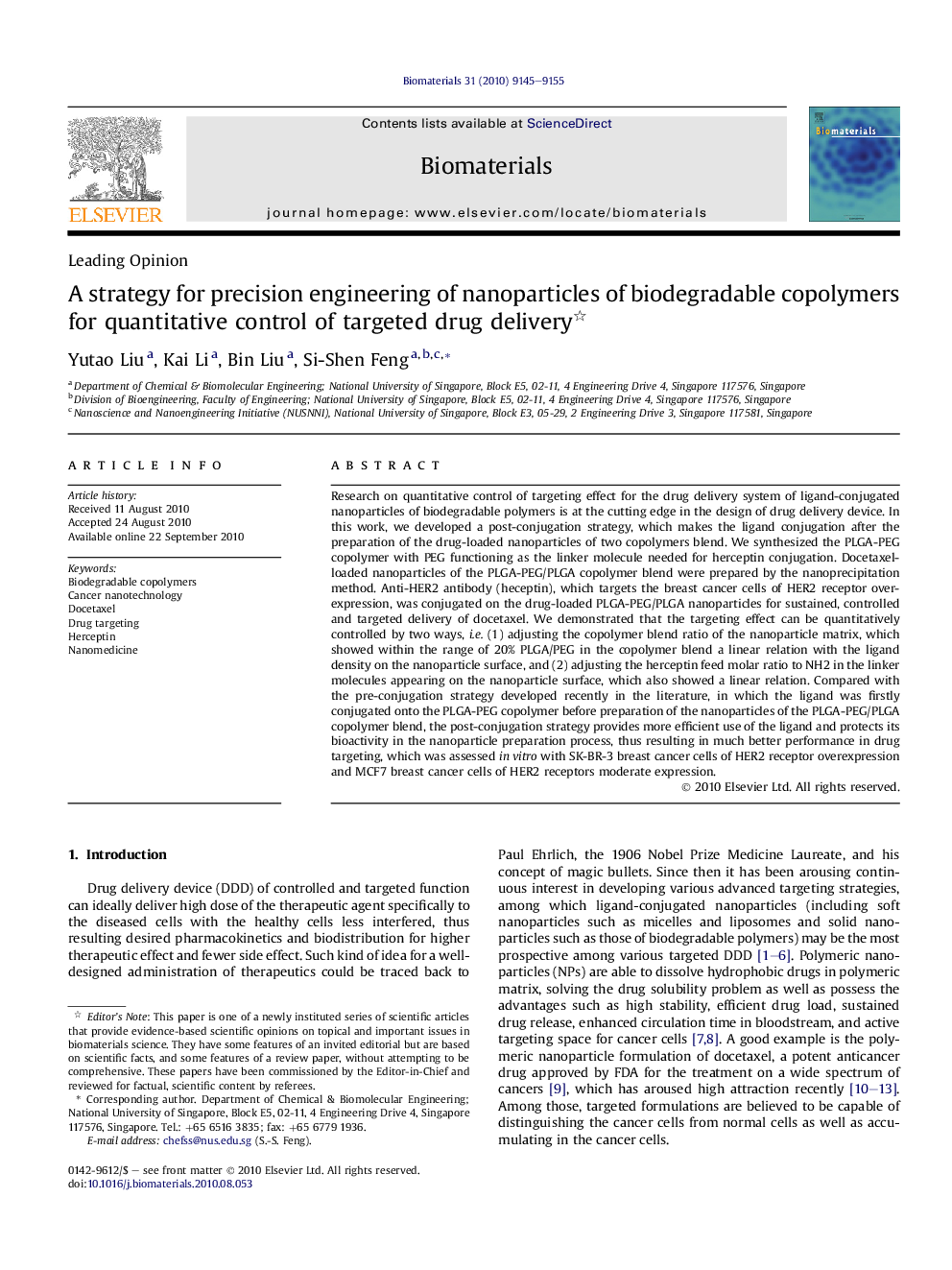| کد مقاله | کد نشریه | سال انتشار | مقاله انگلیسی | نسخه تمام متن |
|---|---|---|---|---|
| 8533 | 597 | 2010 | 11 صفحه PDF | دانلود رایگان |

Research on quantitative control of targeting effect for the drug delivery system of ligand-conjugated nanoparticles of biodegradable polymers is at the cutting edge in the design of drug delivery device. In this work, we developed a post-conjugation strategy, which makes the ligand conjugation after the preparation of the drug-loaded nanoparticles of two copolymers blend. We synthesized the PLGA-PEG copolymer with PEG functioning as the linker molecule needed for herceptin conjugation. Docetaxel-loaded nanoparticles of the PLGA-PEG/PLGA copolymer blend were prepared by the nanoprecipitation method. Anti-HER2 antibody (heceptin), which targets the breast cancer cells of HER2 receptor overexpression, was conjugated on the drug-loaded PLGA-PEG/PLGA nanoparticles for sustained, controlled and targeted delivery of docetaxel. We demonstrated that the targeting effect can be quantitatively controlled by two ways, i.e. (1) adjusting the copolymer blend ratio of the nanoparticle matrix, which showed within the range of 20% PLGA/PEG in the copolymer blend a linear relation with the ligand density on the nanoparticle surface, and (2) adjusting the herceptin feed molar ratio to NH2 in the linker molecules appearing on the nanoparticle surface, which also showed a linear relation. Compared with the pre-conjugation strategy developed recently in the literature, in which the ligand was firstly conjugated onto the PLGA-PEG copolymer before preparation of the nanoparticles of the PLGA-PEG/PLGA copolymer blend, the post-conjugation strategy provides more efficient use of the ligand and protects its bioactivity in the nanoparticle preparation process, thus resulting in much better performance in drug targeting, which was assessed in vitro with SK-BR-3 breast cancer cells of HER2 receptor overexpression and MCF7 breast cancer cells of HER2 receptors moderate expression.
Journal: Biomaterials - Volume 31, Issue 35, December 2010, Pages 9145–9155